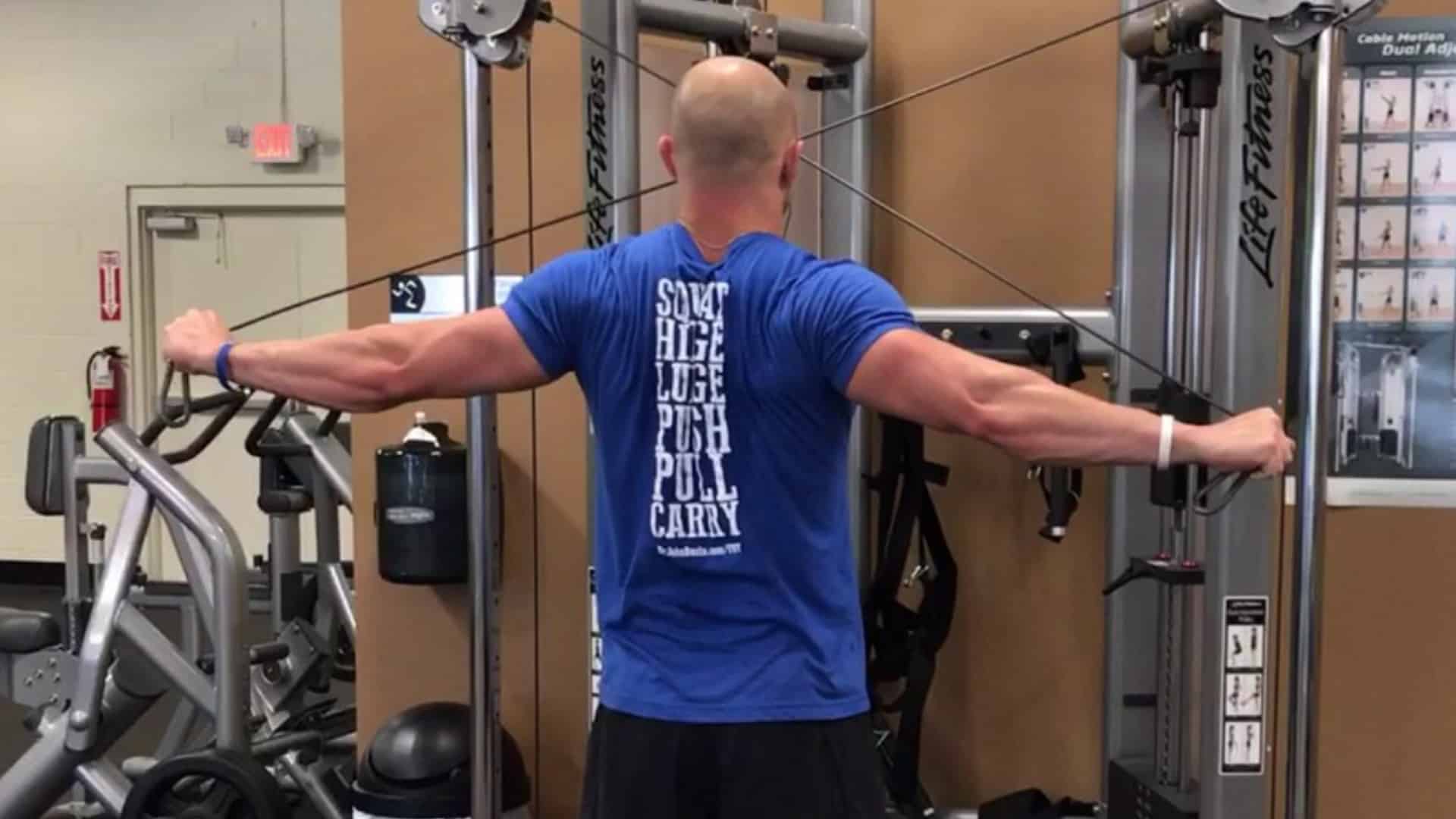If you’re looking for an effective exercise to enhance your upper back and shoulder development, look no further than reverse cable crossovers.
The reverse cable crossover (fly) is an effective exercise for strengthening and toning the rear deltoid muscles and upper back muscles.
Unlike the traditional cable crossover, where the arms cross in front of the body, the arms move behind the body in the reverse cable fly.
The reverse cable crossover is sometimes referred to by other names, such as
- Standing cable reverse fly
- Cross-over High Reverse Fly
- Reverse cable fly
- Rear deltoid cable fly
- Cable reverse fly

Reverse Cable Fly Muscles Worked
During a reverse cable crossover, the primary muscles are the rear deltoids (Back of the shoulders) and the rhomboids.
The secondary muscles engaged during the exercise include the lateral deltoid, Trapezius and Rotator cuff muscles.
Other muscles that contribute to stability and support during the movement include the Triceps, Forearm muscles and Core muscles (including the abs and obliques).

How To Do Standing Cable Reverse Fly
- If using adjustable pulleys, attach handles and set the pulleys at shoulder height or slightly higher.
- Stand in the center of a cable crossover apparatus with your feet shoulder-width apart.
- Cross your arms in front of you and grab the left handle with your right hand and the right handle with your left hand.
- Step back slightly to create tension in the cables.
- While maintaining a slight bend in your elbows, pull your arms out and back until they align with your shoulders.
- Slowly return to the starting position, keeping tension on the cables and controlling the movement.
- Repeat the desired number of reps and sets.
Form and Tips
- The posterior deltoid is best targeted with your torso upright, not leaning too far forward or back.
- Keep a controlled motion and avoid jerky movements.
- Avoid bending your elbows, shrugging your shoulders, and changing the plane of your arm movement.
- Maintain a fixed, slightly bent elbow position throughout the exercise.
- Pull slowly so that you are always in control of the weight.
- To target the posterior deltoid, your arms should move directly back (and downward slightly), almost parallel to the floor.
- If the hands are raised through a higher arc to a point above shoulder level, the trapezius and lateral deltoid contribute more to the movement.
- Crossing your hands over one another (uncrossing the cables) at the start position increases the range of motion.
- Reverse cable fly is a light-weight exercise, so you must do 12-15 reps for each set.
Benefits of Reverse Cable Crossover
- Targets the rear deltoids for better shoulder development and definition.
- Activates the upper back muscles, including the rhomboids and trapezius, for improved strength and posture.
- Enhances shoulder stability and mobility by engaging the rotator cuff muscles.
- Promotes aesthetically and functionally balanced shoulders
- Build symmetry with the shoulder, preventing a “forward sloping” look.
- Aids in creating a well-rounded and sculpted upper body appearance.
- Improve shoulder function.
- Prevent shoulder injuries.

Manish is a NASM-certified fitness and nutrition coach with over 10 years of experience in weight lifting and fat loss fitness coaching. He specializes in gym-based training and has a lot of knowledge about exercise, lifting technique, biomechanics, and more.
Through “Fit Life Regime,” he generously shares the insights he’s gained over a decade in the field. His goal is to equip others with the knowledge to start their own fitness journey.
